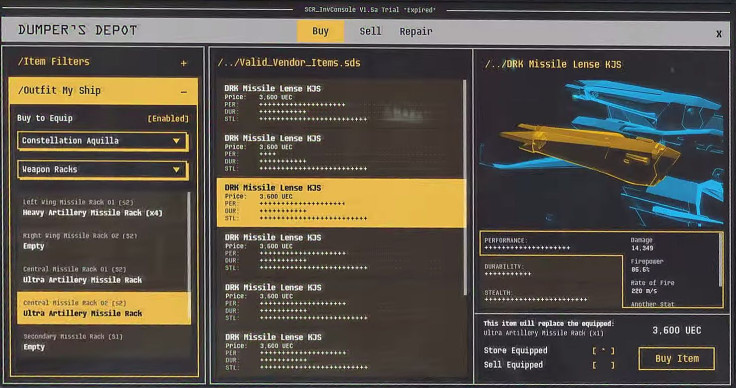Star Citizen ’s extensive development continues, and the latest episode of Around The Verse offers fans another update. Progress on weapons, 3.0 and kiosks were a major part of this particular showcase. As more complex systems come online, the game’s sprawling universe inches closer to the living environment we’ve been promised for years.
This week’s studio update recapped the accomplishments of the Foundry 42 office in Frankfurt. While much of his explanation was technical, Development Director Brian Chambers suggested that improvement is happening not just in the larger game but also the Squadron 42 single-player campaign as well.
Speaking toward the complete universe, the team’s most visible strides came in the form of weapons. Final passes have been done to bring legacy weapons up to the latest engine code, and guns like the Geminii L86 ballistic pistol and P4AR ballistic rifle have reached varied states of completion. Even ship weapons like the Klaus and Werner laser repeaters have been polished in a multitude of sizes.
Plenty of work has been done with regard to weapon features too. Programmers have laid down the code to hide weapons from first-person view while aiming down sights. Possibly the coolest and most impactful update is the early implementation of weapon skins. It's being done for placeholder purposes now, but it’ll eventually be fleshed out in the months ahead.
As for Squadron 42, the VFX and Cinematics teams are hard at work on movie sequences and ship-to-ship communication holograms for that particularly meaty portion of the project.
Outside of Frankfurt, however, Austin has been paying acute attention to detail to create the kiosks to be used throughout Star Citizen’s universe. While the feature itself may sound a bit small in terms of its gameplay impact, for a project as massive as this one, it’s essentially the linchpin that holds the entire living economy together.
In simple terms, Kiosks are the interface through which players purchase items that are not in shops and sell things they don’t need. All selling is done through kiosks, and the act of buying essentially allows for seeing all of a given store’s inventory at a glance. Purchased items can also be sent to in-range ships. It sounds fairly simple in practice, but these stations also need to adapt to every facet of the Star Citizen economy. In other words, they need to carry the correct items, respond to universe price fluctuations and deliver content to players.
With these goals in mind, the developers behind kiosks reiterated some of Star Citizen’s finer economic ambitions. If a particular store is a factory, for example, then it must carry the resources a factory would carry. Prices change based on the scarcity of certain materials as well as how close a specific shop is to certain resource suppliers. All of these variables need to work seamlessly together, and they need to be levied against reasonable costs.
As if that task wasn’t hard enough, kiosks have been created with varying aesthetics as well. For example, designs are being made for low, mid and high-tier kiosks depending on a particular planet’s affluence. A poorer place like Grim Hex may have a more DOS-centric machine, while the premiere Port Olisar would have high-range equipment.

Cloud Imperium Games has some very tall orders to fill, but Technical Designer Rob Reininger feels that Star Citizen is finally coming together. “As these things start to come online, it's really going to change the experience people are having now and turn it much more into the game that we envisioned,” he said.
Star Citizen is available now for backers on PC.
What do you think about the latest weapon and kiosk progress? Are you excited for Star Citizen 3.0? Tell us in the comments section!


















